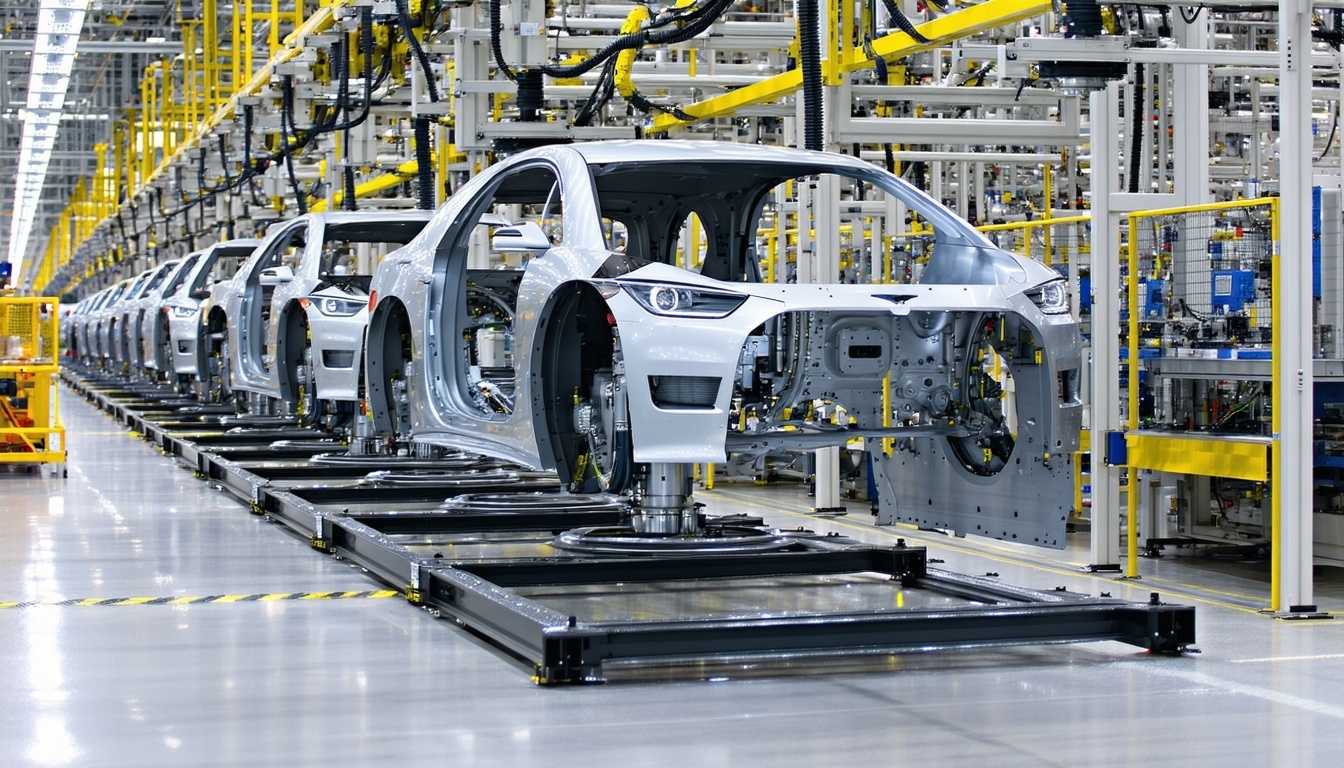Loans for Ohio Manufacturing and Industrial Companies
Ohio has long been a hub for manufacturing and industrial innovation. From automotive suppliers in Toledo to aerospace parts in Dayton and advanced materials in Cleveland, these businesses need capital to expand operations, invest in technology, and compete globally. This guide explores the best loan options for manufacturing and industrial companies in Ohio.
Why Ohio Manufacturers Need Capital
Manufacturing and industrial businesses often require large upfront investments for:
-
Purchasing new machinery and production equipment
-
Expanding or modernizing facilities
-
Hiring and training skilled workers
-
Upgrading supply chain and logistics operations
-
Developing clean-tech or energy-efficient systems
-
Financing bulk raw materials or inventory for contracts
Strategic financing helps manufacturers scale efficiently and improve profit margins through automation and capacity upgrades.
1. SBA Loans for Manufacturers
SBA 7(a) Loans
Ideal for working capital, equipment, facility expansion, and refinancing. Loan amounts can reach up to $5 million, with flexible terms and competitive interest rates.
SBA 504 Loans
Designed for real estate purchases, facility construction, and equipment acquisitions. These loans combine bank lending with support from Certified Development Companies, offering fixed rates and long repayment terms.
SBA Microloans
While smaller in size (up to $50,000), these are useful for manufacturers just starting out or making minor equipment or inventory purchases.
SBA loans require solid documentation but offer some of the best long-term funding solutions available to manufacturers.
2. State-Backed Manufacturing Loan Programs
The state of Ohio offers funding support through various economic development programs. These may include:
-
Fixed-asset financing for equipment and facility improvements
-
Job creation incentives for businesses hiring within Ohio
-
Low-interest loans to support advanced manufacturing technologies
-
Grants or loan guarantees for innovation and clean energy initiatives
Businesses operating in targeted development zones may also qualify for additional benefits.
3. Equipment Financing and Leasing
Manufacturers often need to finance:
-
CNC machines
-
Robotics and automation systems
-
Packaging and bottling lines
-
Vehicles and forklifts
-
Industrial ovens or cooling systems
Equipment financing allows companies to spread payments over 3 to 7 years while preserving working capital. Leasing is also an option for seasonal production or rapid tech upgrades.
4. CDFIs and Local Business Loan Funds
Community Development Financial Institutions (CDFIs) and regional loan funds provide access to capital for underserved businesses, including smaller manufacturing companies. Benefits include:
-
Flexible approval requirements
-
Loan amounts typically ranging from $10,000 to $500,000
-
Support for minority-owned, veteran-owned, and rural-based businesses
-
Additional technical support or consulting services
CDFIs are especially helpful for manufacturers that may not qualify for large traditional bank loans.
5. Industrial Revenue Bonds and Tax Incentives
Larger manufacturers may qualify for Industrial Revenue Bonds (IRBs) through local development authorities. These are long-term, tax-exempt bonds used to fund:
-
Construction of manufacturing plants
-
Major facility renovations or expansions
-
Large-scale equipment installations
Ohio also offers tax incentives for manufacturers who create jobs or invest in certain high-tech or environmentally friendly improvements.
6. Featured Snippet: 7-Step Loan Process for Manufacturers
-
Define funding goal: equipment, expansion, staffing, or inventory
-
Identify suitable loan type: SBA, equipment finance, CDFI, or bond
-
Prepare financials and business plan
-
Get quotes for machinery or facility upgrades
-
Prequalify and compare offers from lenders
-
Submit complete application with supporting documents
-
Finalize funding and implement your growth plan
7. Comparing Ohio Manufacturing Loan Options
| Loan Type | Best For | Considerations |
|---|---|---|
| SBA 7(a) | Working capital, equipment, real estate | Requires strong financials and personal guarantees |
| SBA 504 | Real estate or large equipment | May require 10%+ down payment |
| State Manufacturing Loans | Equipment upgrades, clean tech, job growth | Often tied to job creation or state development goals |
| Equipment Financing | Specific machinery or vehicles | Equipment acts as collateral |
| CDFI Loans | Smaller or underserved manufacturers | Limited loan amounts; regional availability varies |
| Industrial Revenue Bonds | Major facility expansion | Suitable for mid-size to large manufacturers |
8. Ohio Manufacturer Success Story
An auto parts supplier in Columbus secured:
-
A $500,000 SBA 504 loan to purchase a larger facility
-
A $250,000 equipment financing deal to install robotic assembly lines
-
A $100,000 state-backed job creation loan to hire 15 new employees
Within 18 months, the company increased output by 60% and landed two new supply contracts with major car manufacturers.
9. Tips to Improve Approval Odds
To strengthen your loan application:
-
Keep credit score above 650
-
Maintain two or more years of clean financial records
-
Prepare a clear plan showing how funds will boost output or efficiency
-
Include quotes from equipment vendors or contractors
-
Demonstrate ROI or job creation potential
-
Work with a local SBDC or manufacturing extension partnership to refine your proposal
Final Thoughts
Ohio’s manufacturing and industrial businesses are essential to the state’s economy. Whether you’re building out a new facility, upgrading equipment, or hiring more skilled workers, there are a wide range of funding options available. From SBA-backed loans and state incentive programs to equipment financing and revenue bonds, manufacturers can secure the capital they need to compete and grow.
✅ Next Steps
-
Define your funding priorities—machinery, facility, staff, or capacity
-
Research and compare SBA, state, and equipment loan programs
-
Gather your business financials and vendor documentation
-
Connect with a lender or development agency
-
Apply and invest in scaling your manufacturing operation











